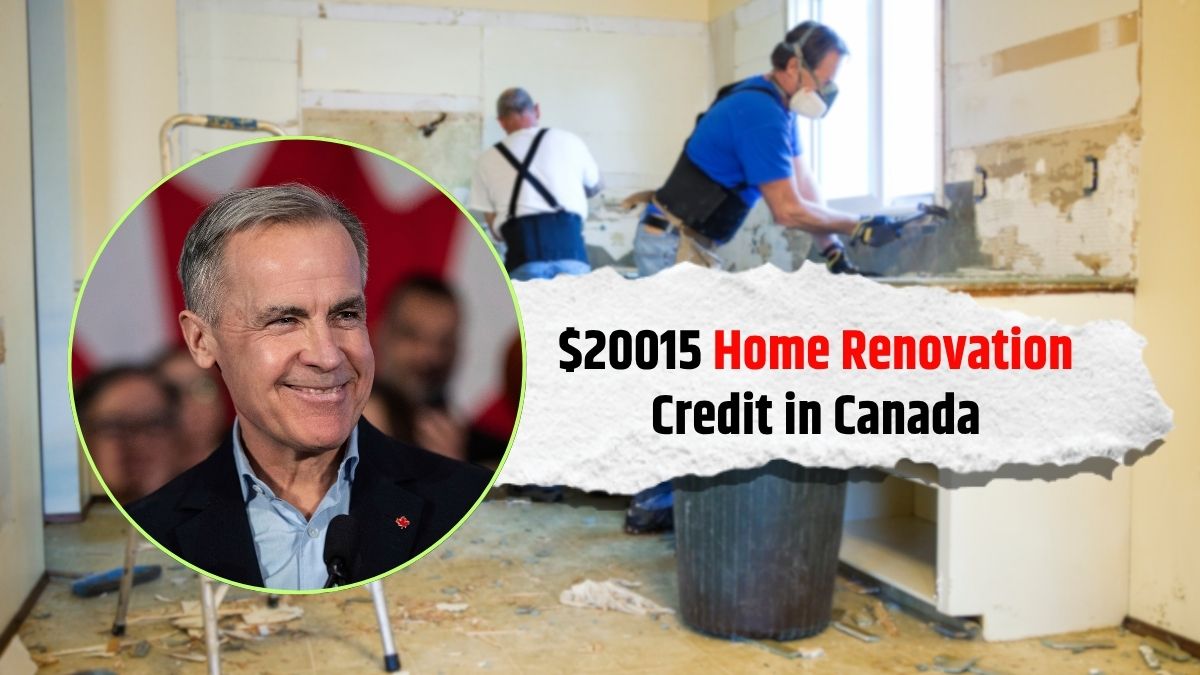The Home Accessibility Tax Credit is one of Canada’s most valuable yet lesser-known financial supports for eligible individuals who need to modify their homes. Worth up to \$20,015 per dwelling, the program is designed to help Canadians with disabilities or those aged 65 and older afford key renovations that make their living spaces safer, more accessible, and easier to navigate.
With a tax credit worth 15% of eligible expenses, homeowners could receive up to \$3,000 back during tax season—an important benefit at a time when home improvement costs continue to rise.
Who Can Claim the Credit?
To qualify, you must either be the qualifying individual or an eligible individual who supports the person needing home accessibility upgrades.
Qualifying Individuals Include:
- Anyone eligible for the Disability Tax Credit (DTC) at any time during the year
- Anyone aged 65 or older by the end of the tax year
Eligible Individuals Include:
- A spouse or common-law partner of the qualifying individual
- Family members such as parents, children, siblings, grandchildren, aunts, uncles, nieces, or nephews
- Anyone who claims the Canada caregiver amount or eligible dependant credit for the qualifying person
Importantly, you do not need to live in the same house to claim expenses—as long as you help support someone who does.
What Is Considered an “Eligible Dwelling”?
To be eligible for the claim, the home must meet a few basic requirements:
- Located in Canada
- Owned (fully or partly) by the qualifying or eligible individual
- Ordinarily inhabited (or expected to be) by the qualifying individual during the year
You can only make a claim for one primary residence at a time, although if you move during the year, you might be able to claim costs from both properties (within the same annual limit).
Which Renovations and Expenses Qualify?
Not every upgrade or repair is eligible. Only renovations that provide permanent accessibility improvements or reduce injury risks within the home qualify.
Eligible Renovations Include:
- Permanent ramps or widened doorways
- Handrails in hallways or stairs
- Non-slip flooring
- Grab bars and safety rails in bathrooms
- Walk-in tubs or wheel-in showers
- Lowered cabinets or light switches
- Stair lifts or motorized lift chairs
- Lighting or alarm systems designed to reduce injury risk
DIY or Hired Help? What You Can and Can’t Claim
If you’re doing the work yourself:
- You can claim costs for materials, fixtures, equipment rental, permits, and plans
- You cannot claim your own labour or the use of personal tools
If a family member helps with the work:
- You can only claim their expenses if they are registered for GST/HST and provide proper receipts
If you hire professionals:
- Costs for work done by licensed plumbers, electricians, carpenters, or architects are fully eligible
- Always keep detailed invoices and proof of payment
Ineligible Expenses: What Doesn’t Count?
There are several items you cannot claim, including:
- Appliances (e.g., fridges, stoves)
- Home electronics (e.g., TVs, speakers)
- General repairs or cleaning services
- Yard work or security systems
- Renovations made to increase property value (not accessibility)
- Portable devices (e.g., a mobile ramp not fixed to the structure)
- Any business-use portion of the home (for example, a ramp shared between personal and business entry)
If you use part of your home for business or rental, you can only claim the personal-use share of the renovations.
Maximum Amount You Can Claim
The maximum annual eligible amount you can claim is \$20,015 per dwelling, regardless of how many qualifying individuals live there.
The credit is calculated at 15%, meaning the most you can receive back is \$3,002.25.
Summary Table:
| Feature | Details |
|---|---|
| Max Eligible Expenses Per Year | \$20,015 |
| Refund Percentage | 15% of eligible expenses |
| Max Refund | Up to \$3,000 (approx.) |
| Applies To | One dwelling per year |
| New Higher Limit | Increased from \$10,000 to \$20,015 (2022) |
How to Claim: Step-by-Step Instructions
1. Keep All Documents
Save invoices, receipts, permits, and proof of payments. The Canada Revenue Agency (CRA) may ask for these during a future audit.
Each receipt must include:
- Description of work or item
- Supplier or contractor name and address
- GST/HST registration number (if applicable)
- Address where the work was done
- Proof of full or partial payment
2. Complete the Federal Worksheet
Use the CRA’s worksheet for Line 31285 to calculate total expenses.
3. Report on Your Tax Return
Enter your final claim amount on Line 31285 of your federal income tax return.
4. Split the Claim (if applicable)
If more than one person wants to claim, you must agree how to divide the \$20,015 limit. The combined claim must not exceed that amount.
5. Do Not Send Receipts (Yet)
Don’t attach your receipts when you file, but keep them for at least six years in case CRA requests them later.
Frequently Asked Questions (FAQs)
1. Can I claim the cost if a relative did the work?
Yes, as long as your family member is registered for GST/HST and gives you a valid receipt showing the nature of the work and the amount paid.
2. What if I moved during the year—can I claim both homes?
Yes, you can claim expenses from multiple dwellings if the qualifying individual lived in each one. However, the total across all homes cannot exceed \$20,015.
3. Can I use these expenses for the Medical Expense Tax Credit too?
If the renovations were medically necessary and meet CRA requirements, you may also claim them as medical expenses. But keep in mind: the same receipt can’t be counted twice unless both credits allow it.
4. Can landlords claim these expenses?
No, unless the landlord is also the eligible or qualifying individual, they cannot claim home accessibility expenses for their tenants.
5. Are there any deadlines to claim for the 2025 tax year?
Yes. You must include the claim on your 2025 federal tax return, which is typically due April 30, 2026. All receipts and documentation should be dated within the calendar year 2025.





